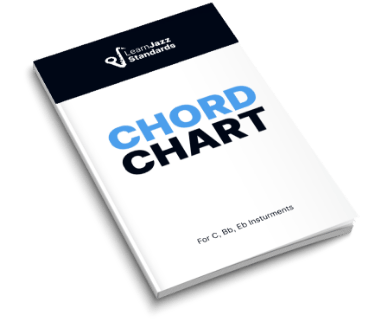To learn jazz guitar, you’ll need to understand seventh chords conceptually and memorize their shapes on the fretboard. When learning seventh chords, the best place to start is the major seventh chord.
This post will break down everything you need to know about major seventh chords in music theory and practice on the guitar. We’ll discuss seventh chords in general, how to construct a major 7th chord, and how you can practice the shapes on guitar so that they stick.
If you are getting into jazz guitar and want to learn how to improvise over changes and comp chord progressions like the pros, then you should check out the Learn Jazz Standards Inner Circle.
The Inner Circle has everything you need to take your jazz guitar playing to the next level, including masterclasses, workshops, and guitar-specific courses designed for guitar players who want to get into jazz music but don’t know where to start.
Take your jazz guitar playing to the next level, and check out the Inner Circle.
Table of Contents
Seventh Chords and How To Build Them
Before we get to the seventh chord, we first have to start with the triad.
A triad is a three-note chord that consists of a root note, a third, and a fifth. To find out what our third and fifth notes are, we start with the root note and count up in scale degrees to the third and fifth notes.
To demonstrate, let’s build a C major triad. We’ll use the C major scale to find our scale degrees:

Our root note is C in this case. To find the third, we’ll count up in scale degrees:
- C is 1
- D is 2
- E is 3
To find the fifth, we’ll keep counting up the scale degrees:
- C is 1
- D is 2
- E is 3
- F is 4
- G is 5
Therefore, our C major triad consists of C, E, and G—our root, third, and fifth, respectively.

Catching on to the process? You might notice that we are taking the scale degrees of C major and stacking thirds on top of one another to create these chords.
- E is a major third away from C
- G is a minor third away from E
For a refresher on major triad shapes, check out our article on major triads.
Building A Seventh Chord From a Triad
To build a seventh chord, let’s repeat the process and stack a third on top of G, giving us four notes.
If we follow the scale degrees of C major, a third above G is a B. B also happens to be the seventh scale degree in the C major scale. This is important because it is where seventh chords get their names.
When we put the C, E, G, and B together, we get a C major seventh chord:

Therefore, a seventh chord is a four-note chord that consists of a root note, a third, a fifth, and a seventh. For more on seventh chords, check out our ultimate guide to seventh chords.
Seventh Chord Varieties (Four Types of Seventh Chords Found in the Major Scale)
In the previous section, we discussed the process for building seventh chords. Following the scale degrees of C major, we get a C major 7th chord when we stack thirds from C.
- C to E is a Major Third
- E to G is a Minor Third
- G to B is a Major Third

However, when we follow the same process from D and E, we get a different type of seventh chord—minor seventh chords.
If we count up the scale degrees of C major but count D as our “1,” we get the following chord:

- D is 1
- F is 3
- A is 5
- C is 7
Though we followed the same process, the result was a different type of seventh chord—a minor seventh chord. This minor chord still has a root, third, fifth, and seventh, but the intervallic relationships differ slightly from a C major seventh chord.
- D to F is a Minor Third
- F to A is a Major Third
- A to C is a Minor Third

This begs the question, “How many types of seventh chords are there?”
Let’s build seventh chords from all the major scale degrees and see what types of seventh chords we find.

When you go through the steps, you’ll find four types of seventh chords:
Major Seventh Chords (Shown in Red Above)
Major Triad + Major 7th interval From the root (C to B)
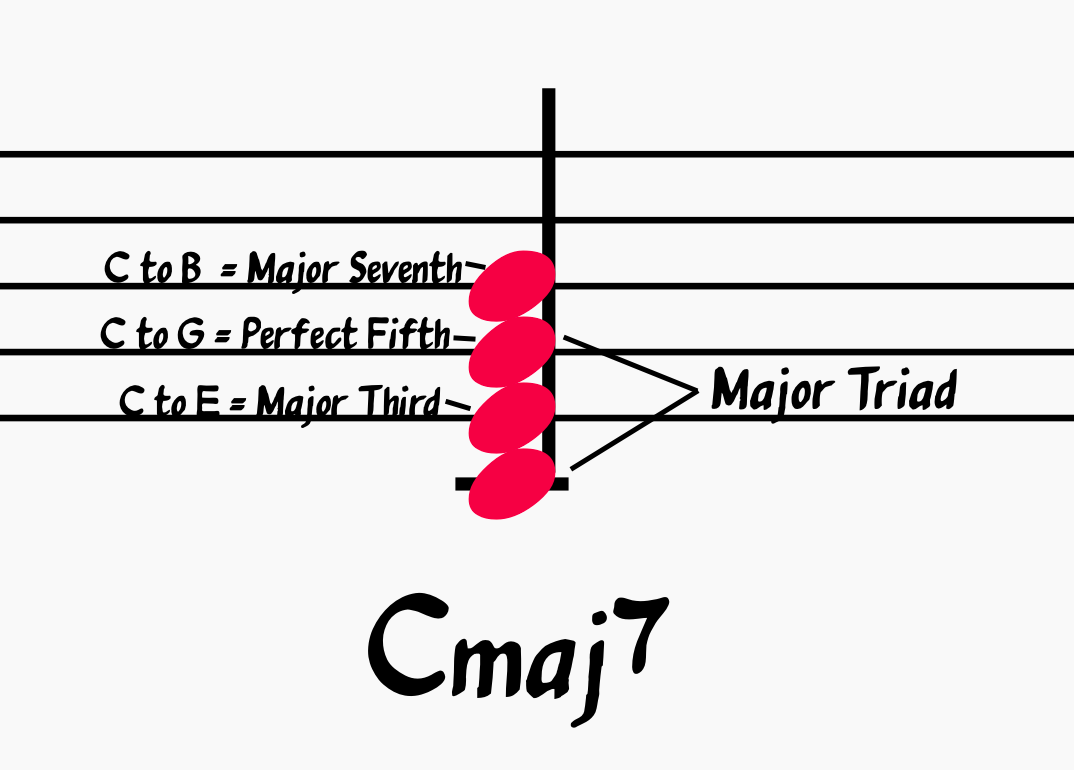
Minor Seventh Chords (Shown in Yellow Above)
Minor Triad + Minor 7th interval from the root (D to C)
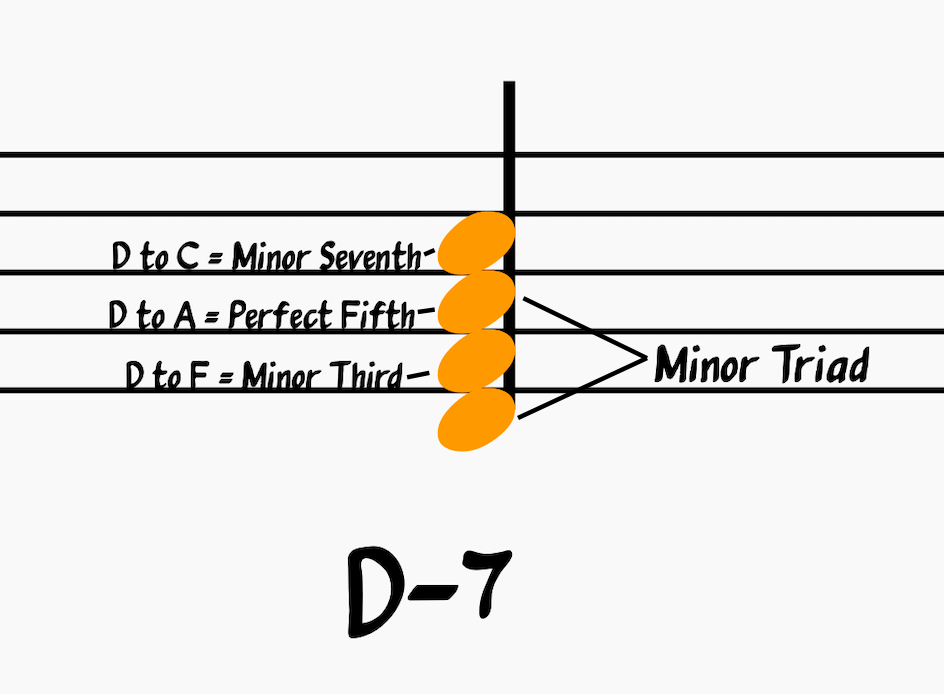
For more on minor seventh chord shapes on guitar, check out our article on mastering minor seventh chord shapes.
Dominant Seventh Chords (Shown in Green Above)
Major Triad + Minor 7th interval from the root (G to F)
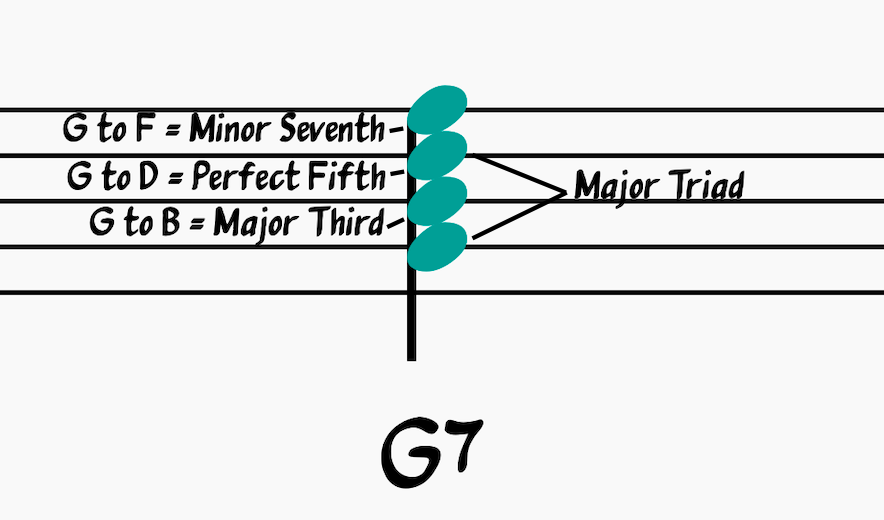
Need more on dominant seventh chord shapes? Check out our article on dominant seventh chords on guitar.
Half-diminished seventh Chords (Shown in Purple Above)
Diminished Triad + Minor 7th interval from the Root (B to A)
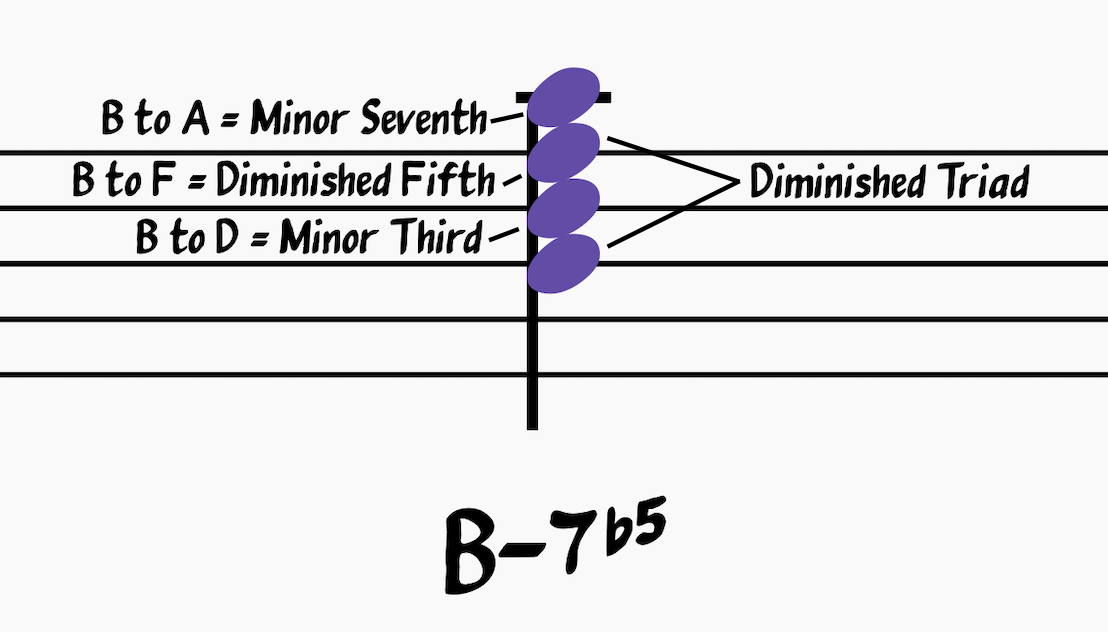
For more on half-diminished seventh chords, check out our article on half-diminished 7th chords on guitar.
Four types of seventh chords are found within the major scale, but there are other types of seventh chords beyond these. However, that’s the topic of another article!
Now that we understand what seventh chords are and how they are built, we can explore major 7th chord shapes on the guitar.
BEFORE YOU CONTINUE...
If music theory has always seemed confusing to you and you wish someone would make it feel simple, our free guide will help you unlock jazz theory secrets.

Major 7th Chord Shapes on the Guitar Fretboard
Finally, we’ve made it to the crux of the article—major seventh chord shapes!
Using the following major seventh chord chart diagrams, you’ll learn a G major 7th chord in all inversions on three string groups. If you aren’t sure what an inversion is, we’ll briefly review:
So far, we’ve been talking about seventh chords in root position. When in root position, a G major 7th chord has a G on the bottom, a B above the G, a D above the B, and an F# above the D. It looks like this:
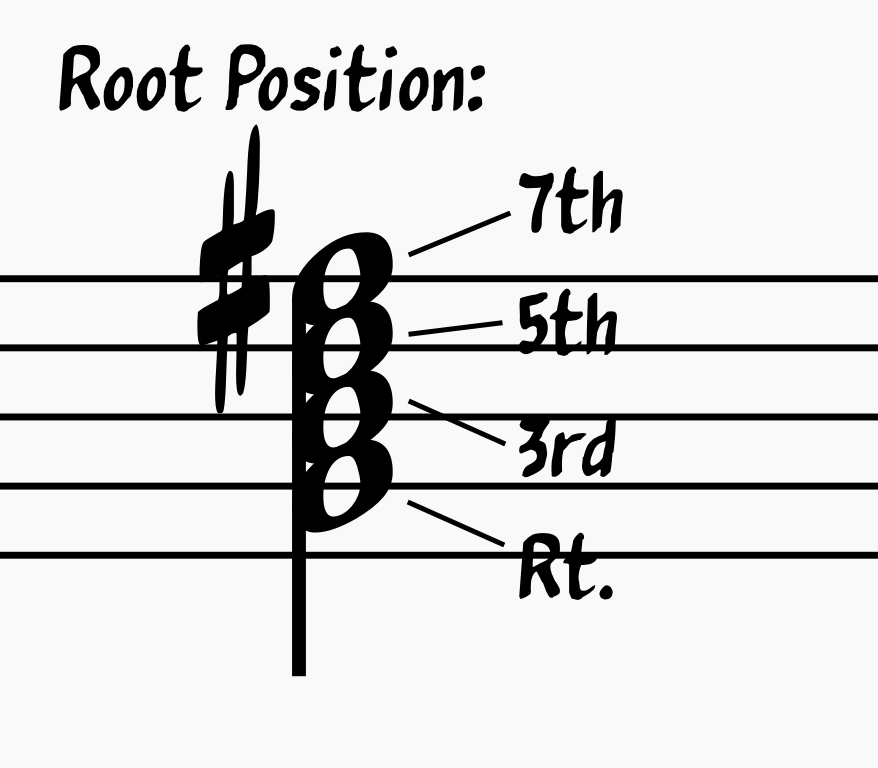
But chords don’t always appear in root position. Often, they are inverted. This means one of the other chord tones is on the bottom.
Let’s bring the bottom note G to the top of the chord voicing, leaving the 3rd or B on the bottom. This is a first inversion G major seventh chord.
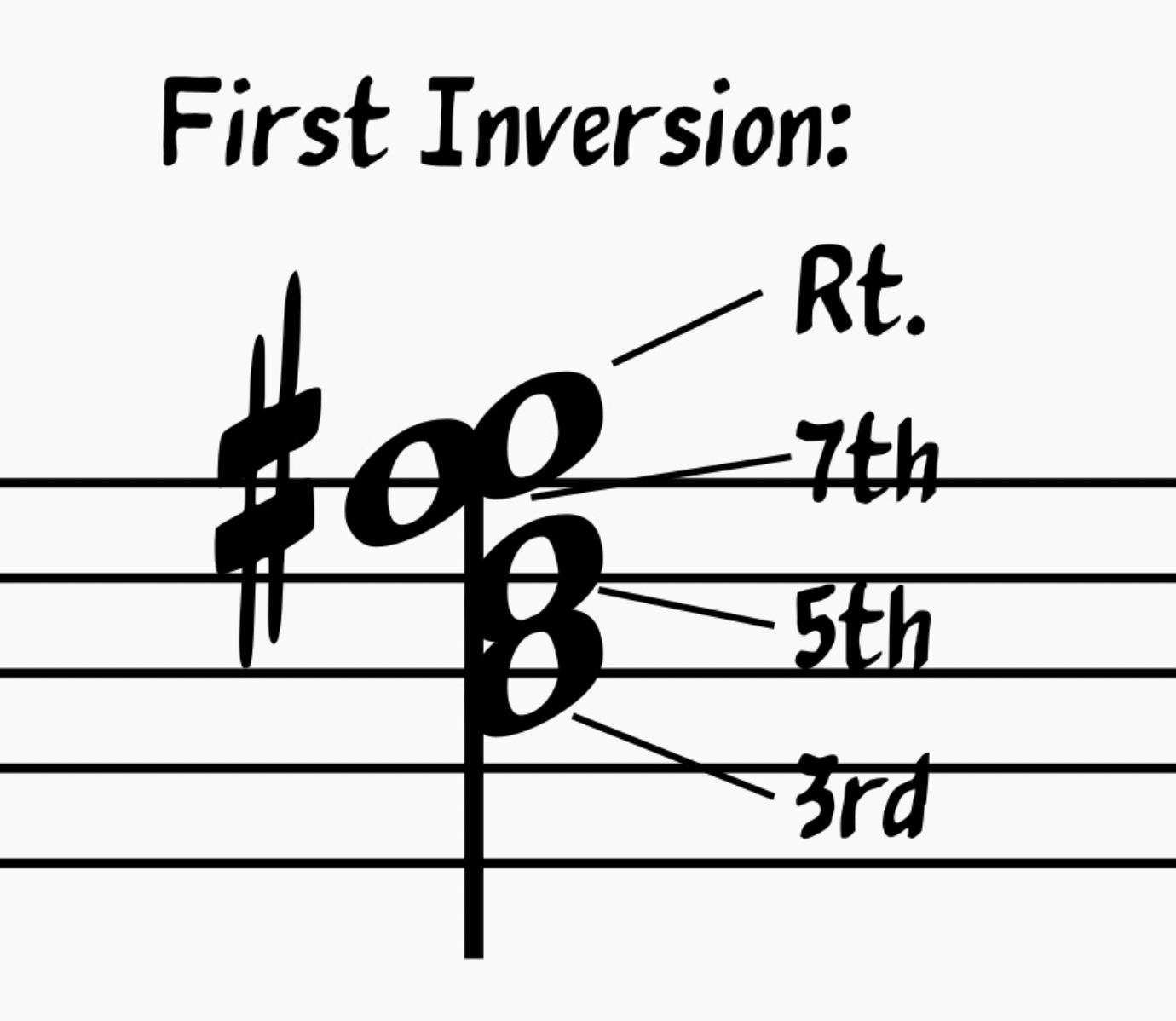
Let’s move the 3rd up to the top, leaving the 5th on the bottom. This is a second inversion G major seventh chord.
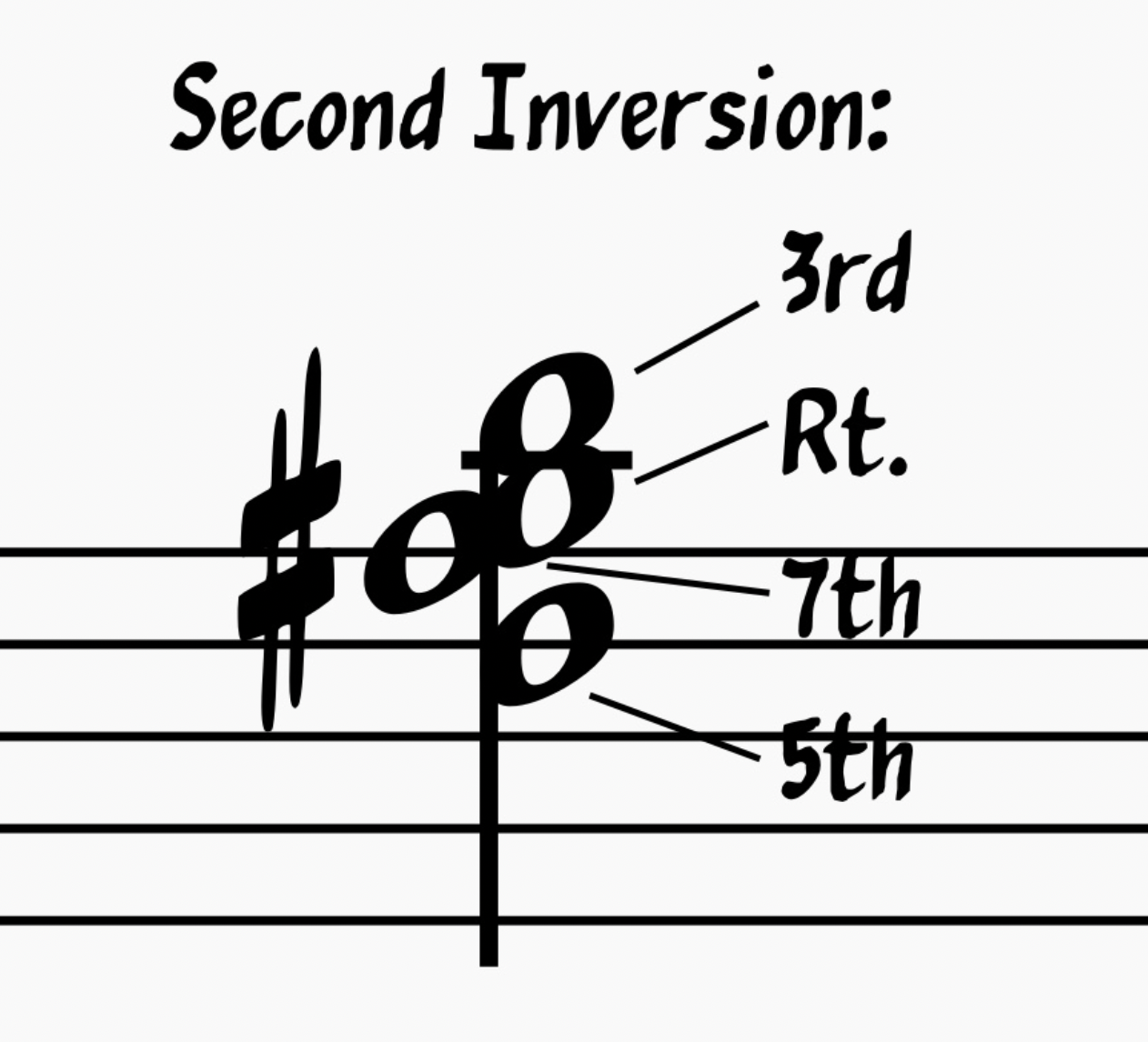
Finally, let’s bring the 5th to the top, leaving the 7th at the bottom. This is a third inversion G major seventh chord.
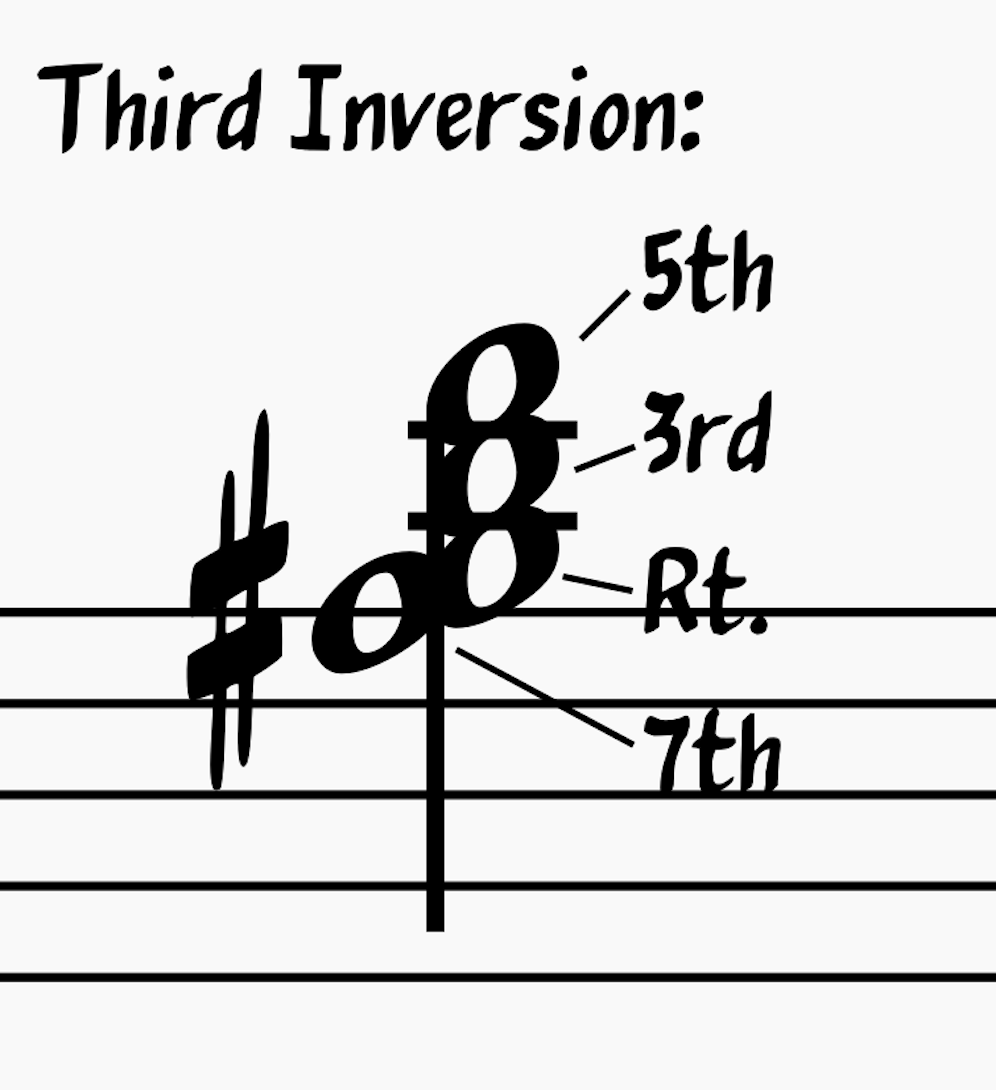
Because there are four notes in a G major seventh chord, we can play four possible configurations per string group. The following chord chart diagrams show four shapes for each string group we’ll cover. Each one of these chord shapes represents one of the four configurations:
- Root position (the root is on the bottom)
- First Inversion (the third is on the bottom)
- Second Inversion (the fifth is on the bottom)
- Third Inversion (the seventh is on the bottom)
String Group 1: E-A-D-G
Root Position:

First Inversion:

Second Inversion:

Third Inversion:

String Group 2: A-D-G-B
Root Position:

First Inversion:

Second Inversion:

Third Inversion:

String Group 3: D-G-B-E
Root Position:

First Inversion:

Second Inversion:

Third Inversion:

How to Practice These 7th Chord Inversions
There are many different ways to practice these seventh chords. However, it would be best if you prioritized memorizing them and being able to move through all inversions on each string group in time first.
Try playing up and down the following exercises using a metronome. It’s important that you keep the metronome at a consistent value for each of the three exercises. Try starting between 50 and 60 bpm.
Level 1: Whole Notes
The idea is that you have four beats to switch to the next major chord shape. With the right tempo, you should be able to do this after working on it a bit.

Level 2: Half Notes
When you switch to half notes, you’ll have half the time to change to the next chord shape. Remember, keep the metronome consistent! We’re not increasing the tempo—rather, we are shortening the harmonic rhythm.

Level 3: Quarter Notes
With quarter notes, we’ve shortened the harmonic rhythm quite a bit compared to when we started. Remember, the metronome should be the same speed as at level 1.

Level 4: 8th Notes
This final challenge might be really difficult at first! Master the previous levels before moving on to this level. To put things in perspective, the first level is eight measures and level four is one.

Next steps:
You’ll want to repeat this exercise on the other two string groups. Then, you’ll want to take this concept into the other 11 keys. Eventually, you’ll want to be able to do this exercise on other seventh chord qualities:
- Minor seventh chords
- Dominant seventh chords
- Half-diminished seventh chords
Master Jazz On Your Guitar—Join the Learn Jazz Standards Inner Circle!
If your jazz guitar practice routine needs a facelift, then you should check out the Learn Jazz Standards Inner Circle!
With guitar-specific courses and general jazz improvisation courses, workshops, and masterclasses, the Inner Circle has everything you need to bust through practice plateaus and get to the next level!
Ready to revolutionize your jazz practice routine and learn jazz standards? Come see what the Inner Circle has to offer!









